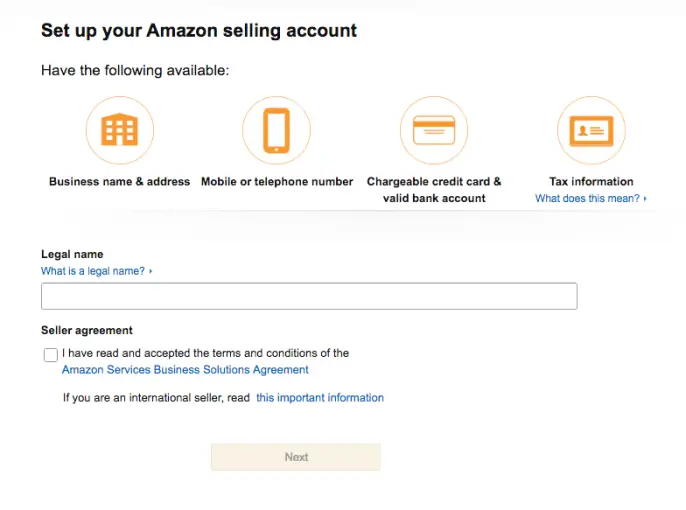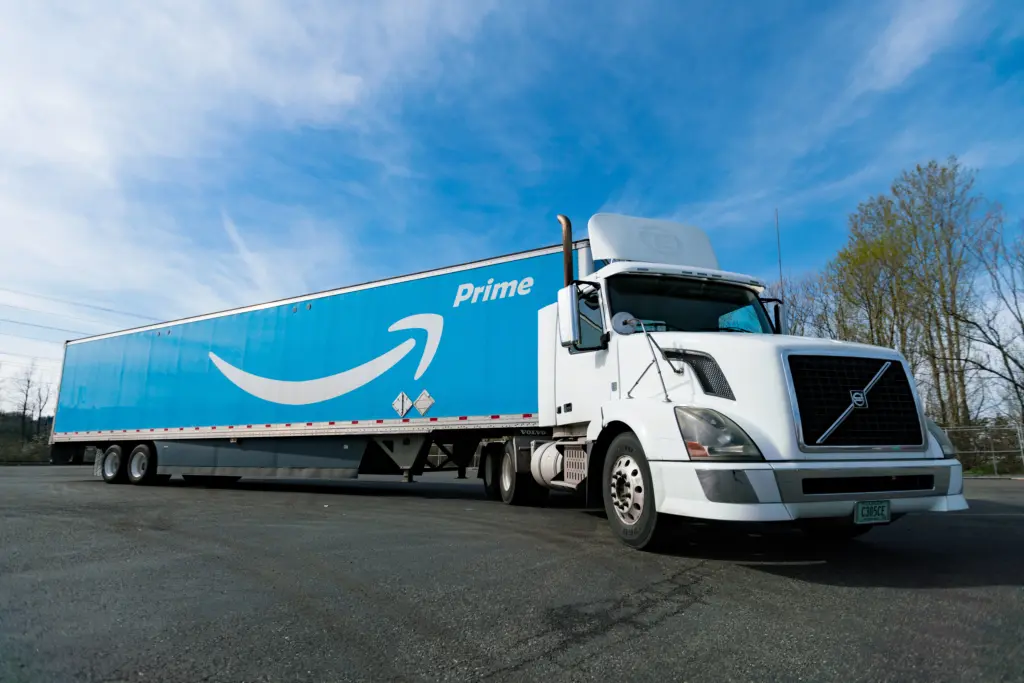If you’ve ever dreamed of starting your own online business, Amazon FBA (Fulfillment by Amazon) is a fantastic option for turning your dream into a reality with minimal hassle. Amazon FBA for beginners represents an incredible opportunity for anyone with or without business experience to become one of the tens of thousands to make money on Amazon.
Amazon FBA simplifies the selling process by handling many business operational complexities. It makes it as easy for people without previous experience to create their shop within the largest e-commerce marketplace in the world.
In this comprehensive guide, we’ll dig into the Amazon FBA program, helping you understand what it is, why it exists, how it works, and if it’s right for you.
What is Amazon FBA?
Amazon FBA is a service that allows sellers to store their products in Amazon’s fulfillment centers. Since the wide variety of products on Amazon and quick, convenient shipping are often considered the two hallmarks that fuel Amazon’s popularity as the preferred e-commerce platform by a wide margin, it’s not an exaggeration to say they’re the heart of Amazon’s marketplace.
When a customer orders a product through the FBA program, Amazon handles the picking, packing, shipping, and customer service. This includes returns and refunds, which means sellers can enjoy a hands-off approach to logistics. In short, Amazon FBA makes running an online business possible for virtually anyone.
Comparatively speaking, if you want to run a brick-and-mortar business, your product is just the beginning. You must consider your product(s), physical location, buying or renting property, hiring employees, inventory management, advertising, customer service, taxes, etc. The online platform and FBA program streamline various aspects, making running a business less hands-on. This allows business owners to narrow their scope, reduce costs, and tap into Amazon’s massive consumer base.
Pro Tip: Check out our How to Sell on Amazon in 8 Simple Steps to learn Amazon FBA, and follow our Amazon FBA step-by-step guide to learn how to sell on Amazon FBA for beginners. Packed with Amazon FBA tips for beginners, it’s our deep-diving beginner’s guide to FBA. Additionally, we highly recommend our Amazon FBA course for beginners, where industry experts give you an intro to Amazon FBA.
Now that you know how Amazon FBA works, let’s look at the strengths and weaknesses afforded to Amazon FBA sellers in the program.
Pros and Cons of Amazon FBA
Benefits of Using Fulfillment by Amazon (FBA)
Starting an FBA business offers several powerful advantages that can supercharge your e-commerce business:
- Hassle-Free Logistics: Amazon handles storage, packing, shipping, and customer service.
- Scalability: You can easily scale your business with reduced operational burdens.
- Prime Eligibility: Products become eligible for Amazon Prime and can attract more customers.
- Increased Buy Box Share: Higher chances of winning the Amazon Buy Box, leading to more sales.
- Return Management: Amazon handles returns, providing a seamless customer experience.
With FBA, you can say goodbye to the hassle of packing boxes in your personal space as Amazon handles your logistics. This allows for easy scalability so you can handle increased sales without getting burnt out. Plus, your products automatically become Prime-eligible, allowing you to tap into Amazon’s massive Prime customer base. You’ll also have a better chance of winning that Buy Box prime real estate, and Amazon will handle those pesky returns for you. It’s almost like having a full-fledged fulfillment team at your disposal.
These advantages (among others) can make running your e-commerce business a breeze, but FBA also has a few cons. For instance, the fees and fulfillment costs associated with the FBA process include having your items shipped to the fulfillment center, and you don’t get to choose the FBA warehouse.
Cons of Using Amazon FBA
While FBA offers numerous benefits, it’s not without its challenges:
- Costs: Storage, fulfillment, and long-term storage fees can add up.
- Inventory Management Challenges: Keeping track of inventory levels and avoiding stockouts or overstock situations.
- Limited Control Over Fulfillment: Less control over packaging and shipping processes.
- Product Prep Requirements: Products must meet Amazon’s packaging and labeling guidelines.
The costs associated with FBA can eat into your profits if you’re not careful, so it’s crucial to factor these into your pricing strategy. Inventory management becomes more complex as you must balance stock levels across Amazon’s warehouses. You’ll also have limited control over the fulfillment process, as you’re at the mercy of Amazon’s systems.
You must follow strict product prep requirements to ensure a smooth selling process that allows Amazon to offer industry-leading shipping times. If your products don’t sell quickly, you should be wary of long-term storage fees. As with anything in life, it’s crucial to weigh these downsides carefully when deciding if FBA makes the most sense for you.
Additionally, it may be worth comparing Fulfillment by Merchant (FBM) options to FBA if you’re set on becoming an Amazon seller but see more opportunities through alternative fulfillment methods.
How to Set Up An Amazon FBA Account
Steps to Get Started

To set up an Amazon FBA account, we recommend following our step-by-step guide to create a Seller account within Amazon Seller Central. Once active, enroll in the FBA program and select it as your fulfillment method. Once that’s done, log in to Seller Central and navigate to your account settings. Look for the “Your Services” section and click on “Manage” next to “Fulfillment by Amazon.”
From there, you’ll be guided through the process of enrolling in FBA. Make sure to have your business information handy, as you’ll need to provide some details during setup.
Choosing Your First Products to Sell
Selecting the right products to sell is critical when starting Amazon FBA. Your choice of products can significantly impact your success, so it’s essential to conduct thorough research and make informed decisions about what to sell on Amazon FBA.
Use Product Research Tools: Leverage product research tools to simplify the process of finding profitable products. Our Product Discovery software was engineered to find the best items to sell on Amazon FBA for beginners, helping you identify high-potential items based on various criteria, such as sales volume, competition, and profit margins.
Research and Analyze Market Trends: When a product idea seems intriguing, head to Market Intelligence to gain insights into the market. Look for products with a consistent sales history and avoid seasonal items that may only sell during specific times of the year. Additionally, MI delivers AI-driven insights to warn you of potential red flags, so it’s like having an astute assistant looking out for your best interests.
Evaluate Competition: Assess the competition by analyzing the top sellers for similar products in your market. Look for brand-name competitors with built-in advantages, intense competition that can lead to price wars and lower margins, and the opportunity to stand out within the marketplace and own some type of advantage.
Check Product Restrictions and Regulations: Ensure that your chosen products comply with Amazon’s selling policies and relevant regulations. Some products may require additional certifications or approvals before being sold on Amazon.
We’ve covered this topic in depth to help you avoid common missteps and start your Amazon business correctly. We’ve even researched to find the most profitable Amazon product categories and whether pursuing them makes sense.
How to Prep Your Products for Amazon FBA

Product Sourcing Strategies
Finding reliable suppliers and ensuring product quality is critical to the success of your Amazon FBA business. Here are some strategies to help you source products effectively:
1. Identify Reliable Suppliers: Research potential suppliers on platforms like Alibaba, Global Sources, and ThomasNet. Look for suppliers with good reviews, verified status, and a track record of reliability. Don’t hesitate to request samples to assess the quality of their products firsthand.
2. Evaluate Product Quality: Request detailed specifications and samples to ensure the products meet your standards. Conduct quality checks to verify that the products align with your expectations and comply with any relevant regulations or standards. If you can identify potential issues with the product or improvements, bring them up to suppliers and see how
3. Negotiate Terms: Negotiate favorable terms with your suppliers, including pricing, minimum order quantities, payment terms, and shipping arrangements. Building a strong relationship with your suppliers can lead to better deals and more reliable service.
Remember, your supplier is a foundational element of your online business and is responsible for creating products people will ultimately pay for. Think critically about the quality and the likelihood of building a profitable business that leads to satisfied customers, as they’ll leave reviews that can either build your business up through positive testimonials or deter purchases with negative reviews that can be difficult to overcome.
Pro Tip: For a more in-depth look into shipping to Amazon and FBA basics for new sellers, check out our complete Shipping to Amazon FBA Guide to save precious time and money and set yourself up for success in the Amazon marketplace.
Preparing and Packaging Your Products
Once you’ve sourced your products, preparing and packaging them correctly for Amazon FBA is crucial to ensure a smooth Amazon selling process and maintain customer satisfaction.
1. Understand Amazon’s Packaging Requirements: Amazon has specific packaging and labeling guidelines that you must follow. These include Amazon FBA requirements for packaging materials, labeling, barcodes, and safety precautions. Familiarize yourself with these guidelines to avoid any issues during the fulfillment process.
2. Best Practices for Packaging:
- Secure Packaging: Use sturdy, high-quality packaging materials to protect your products during transit. Avoid using damaged or weak packaging that could result in product damage.
- Proper Labeling: Ensure that each product is labeled correctly with scannable barcodes. This includes the unique Amazon FNSKU (Fulfillment Network Stock Keeping Unit) label.
- Poly Bagging: For products that are not fully enclosed, use poly bags with suffocation warnings. This is particularly important for loose items or products with multiple components.
3. Prep Your Products for Shipment:
- Inspection: Conduct a final inspection of your products before shipping them to Amazon’s fulfillment centers. This helps ensure that only high-quality items reach your customers.
- Bundling: If you sell bundles or multipacks, ensure they are properly packaged together and clearly labeled as a single unit.
- Documentation: Include all necessary documentation, such as packing slips and shipping labels, with your shipment to avoid any delays or issues at the fulfillment center.
4. Choose the Right Packaging Supplies: Invest in the proper packaging supplies, such as boxes, bubble wrap, tape, and labels. Using high-quality supplies can prevent damage during shipping and enhance the overall presentation of your products.
We’ve created a step-by-step guide on how to ship products to Amazon FBA if you’re interested in learning more.
Managing Your Inventory on Amazon
Inventory Management Basics
Effective inventory management is foundational to running a successful Amazon FBA business. Managing stock levels efficiently ensures you can meet customer demand without overstocking or running out of inventory. To achieve this, tracking your inventory levels and updating them appropriately is essential.
Regular monitoring through Amazon’s inventory dashboard gives you access to real-time data, allowing you to make informed decisions about when to restock your inventory. Setting reorder points for each product is another crucial strategy that can pay off when executed properly.
As one of our Amazon FBA startup tips, we recommend considering the factors below when trying to find the magic number to send to the Amazon warehouse.
- Lead times: Consider both supplier production time and shipping duration.
- Sales velocity: Analyze historical data from Market Intelligence and directly from Amazon to estimate future demand.
- Seasonality: Adjust for peak seasons and promotional periods.
- Safety stock: Maintain a buffer to cover unexpected spikes in demand or supply chain disruptions.
Avoid Common Inventory Issues
As you manage your FBA inventory, watch out for common pitfalls that can harm your business. Stockouts can tank your rankings and cause you to lose valuable sales, potentially significantly damaging your business.
On the flip side, overstocking ties up your capital and can lead to hefty storage fees. Please pay special attention to slow-moving inventory, as it risks incurring long-term storage fees that can eat into your profits. Regularly reviewing your inventory performance and making data-driven decisions is crucial for long-term success.
Suppose you can strike the perfect balance to avoid stockouts and costly long-term storage fees. In that case, you’ll be rewarded for mastering the Amazon FBA basics and putting your business on the fast track to profitability.
Optimize Your Listings To Increase Sales
Create Compelling Product Listings
One of the most beneficial things you can do to fuel your business’s success once you’ve decided to be an FBA seller and chosen a product is to optimize your listing completely. While there are many fine details, this generally refers to your listing, including the following:
- High-Quality Images: Use professional images that showcase your product.
- Keyword-Rich Titles: Write titles that include relevant keywords for better search visibility.
- Compelling Descriptions: Craft detailed product descriptions and bullet points highlighting key features and benefits.
Ideally, your product images are crisp and professional, and you should accurately showcase your product to give customers proper expectations of what they’re receiving and highlight potential real-life ways it can be helpful. Given the feverish competition in the marketplace, bland or unprofessional images make it too easy for shoppers to browse right by your product before eventually purchasing from your rivals.
Remember that creating your product description is equal parts art and science. Prioritize SEO without keyword stuffing to maximize your reach and visibility while making it easy for customers to read. It’s a tricky balancing act, and writing exclusively for SEO can be tempting, but the ultimate goal is to convince customers to purchase your product. Think about the customer and their questions or concerns about your product. Be sure to tackle these topics within your listing so you don’t lose customers who have clicked on your listing to learn more.
Advertise and Promote Your Products
Leverage Amazon Sponsored Products
Amazon PPC (Pay-Per-Click) advertising can be a powerful tool to supercharge your product’s visibility, especially when starting. To get started, set up your first campaign in Seller Central. We recommend beginning with automatic targeting to gather data on which search terms are converting for your products, which you can use to become aware of your general product performance and use that data to power future campaigns.
Once you have this data, use it to create more targeted manual campaigns. The key to success with PPC is continuous monitoring and adjustment. Keep a close eye on your bids and keywords, and don’t be afraid to cut what’s not working and double down on what is.
Pro Tip: Our AdSprout PPC software is the ultimate tool for supercharging your advertising campaigns on Amazon. Using our vast database and Amazon knowledge, AdSprout provides insights, recommendations, and automation that you can personalize based on your comfort levels. With AdSprout PPC, you can run profitable campaigns while you sleep. Just as powerful, it can shut off wasteful, inefficient campaigns to ensure your campaigns thrive.
Promotional Strategies Outside of Amazon
While Amazon’s internal tools are powerful, don’t put all your eggs in one basket. Building an email list can be incredibly valuable for product launches and driving repeat sales.
Leverage social media platforms to engage with your audience and drive external traffic to your Amazon listings. Collaborating with influencers in your niche can help you reach new potential customers. Consider creating content marketing, such as blog posts or YouTube videos, that educate your audience about your product category. These external efforts can not only drive sales but also help build a brand that extends beyond Amazon.
Even in a marketplace as robust and far-reaching as Amazon, diversifying your online business’s revenue streams can be a great way to earn more money and mitigate the risks associated with relying on Amazon’s marketplace.
Analyze and Scale Your Amazon FBA Business
Amazon Performance Metrics
To grow your FBA business, you need to keep a close eye on key performance metrics. Regularly monitor your sales and revenue trends to understand your business’s health. Pay attention to your profit margins – it’s not just about top-line growth but about how much you’re keeping.
Customer reviews and feedback provide valuable insights into product quality and areas for improvement. Track your inventory turnover rate to ensure you’re not tying up too much capital in slow-moving stock. If you’re using Amazon advertising, your Advertising Cost of Sale (ACoS) is a crucial metric to watch. Use these metrics to decide where to focus your efforts and resources.
Final Thoughts on How to Start With Amazon FBA
Amazon FBA offers beginners an incredible opportunity to build a thriving e-commerce business. By leveraging Amazon’s world-class fulfillment network, you can focus on finding great products and growing your brand.
With the right strategies and tools, you can become a top Amazon seller. At Viral Launch, we offer innovative tools to help streamline the process and maximize your success. From product research to listing optimization and performance tracking, we’ve got you covered. Viral Launch offers a 7-day money-back guarantee so sellers can enjoy unrestricted access to our suite of tools. Start your Amazon FBA journey today and take the first step towards becoming a top seller!








